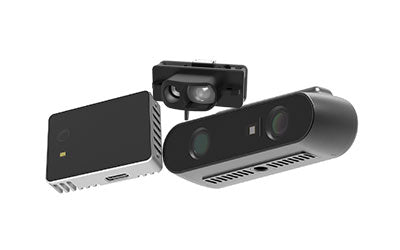Los conceptos básicos de la calibración y precisión de los sensores TOF

Los sensores de tiempo de vuelo (TOF) se utilizan ampliamente en diversas aplicaciones, como medición de distancias, detección de objetos y seguimiento de movimientos. Los sensores TOF funcionan emitiendo un pulso de luz y midiendo el tiempo que tarda la luz en rebotar desde el objeto. Sin embargo, para garantizar mediciones precisas y confiables, los sensores TOF requieren calibración. En este artículo, discutiremos los conceptos básicos de la calibración y precisión de los sensores TOF.

Calibración de Sensores TOF
La calibración de sensores TOF implica ajustar el sensor para garantizar que sus mediciones sean precisas y consistentes. El proceso de calibración generalmente consiste en medir una distancia o un objeto conocido para obtener un valor de referencia, y luego ajustar la configuración del sensor para que coincida con dicho valor. La calibración es esencial porque factores ambientales como la temperatura, la humedad y la luz ambiental pueden afectar las mediciones del sensor. La calibración puede realizarse de forma manual o automática, dependiendo del diseño del sensor.
Calibración Manual
La calibración manual implica ajustar manualmente la configuración del sensor para que coincida con un valor de referencia. Para realizar la calibración manual, el sensor se coloca a una distancia conocida de un objeto, y las lecturas del sensor se comparan con el valor de referencia. Luego, se ajustan las configuraciones del sensor hasta que las lecturas coincidan con el valor de referencia.
Calibración Automática
La calibración automática implica el uso de un algoritmo o un conjunto de instrucciones para ajustar la configuración del sensor automáticamente. La calibración automática suele ser más precisa que la manual porque elimina la posibilidad de errores humanos. La calibración automática se usa con frecuencia en aplicaciones donde se requiere alta precisión.
Precisión del Sensor TOF
La precisión de un sensor TOF se refiere al grado en que las mediciones del sensor coinciden con la distancia real o el objeto que se está midiendo. Varios factores pueden afectar la precisión del sensor, incluyendo su resolución, las condiciones de luz ambiental y la reflectividad del objeto. La precisión de los sensores TOF generalmente se especifica como un porcentaje de la distancia u objeto medido.
Factores que Afectan la Precisión del Sensor TOF
Resolución
La resolución del sensor se refiere a la distancia más pequeña que el sensor puede medir con precisión. Los sensores de mayor resolución suelen proporcionar mediciones más precisas.
Condiciones de Luz Ambiental
Las condiciones de luz ambiental pueden afectar la precisión del sensor al interferir con los pulsos de luz emitidos por el sensor. Los sensores TOF con una alta relación señal-ruido pueden proporcionar mediciones precisas incluso en condiciones de luz ambiental brillante.
Reflectividad del Objeto
La reflectividad del objeto que se está midiendo también puede afectar la precisión del sensor. Los objetos con baja reflectividad pueden no reflejar suficiente luz de vuelta al sensor, lo que da como resultado mediciones inexactas.

Conclusión
La calibración y precisión de los sensores TOF son factores críticos para garantizar mediciones precisas y confiables. La calibración puede realizarse de forma manual o automática, dependiendo del diseño del sensor. La precisión de los sensores TOF se ve afectada por varios factores, como la resolución del sensor, las condiciones de luz ambiental y la reflectividad del objeto. Al comprender los conceptos básicos de la calibración y precisión de los sensores TOF, puede asegurarse de que sus mediciones sean precisas y confiables.
Sinexens Sensor TOF Industrial de Profundidad Cámara 3D de Rango_CS20-P
Soporte Postventa
Nuestro equipo técnico profesional, especializado en el rango de cámaras 3D, está listo para asistirle en cualquier momento. Si experimenta algún problema con su cámara TOF después de la compra o necesita aclaraciones sobre la tecnología TOF, no dude en contactarnos en cualquier momento. Nos comprometemos a ofrecer un servicio técnico postventa de alta calidad y una excelente experiencia de usuario, garantizando su tranquilidad tanto en la compra como en el uso de nuestros productos.
-
Publicado en
CS20P



